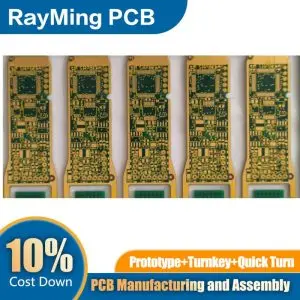Design for Manufacturing (DFM) is a critical engineering methodology that focuses on designing products in a way that makes them easier, faster, and more cost-effective to manufacture. DFM issues can lead to production delays, increased costs, quality problems, and even complete product redesigns. Understanding how to avoid these pitfalls is essential for any product development team aiming to bring successful products to market.
Understanding DFM Fundamentals
DFM issues typically arise when designers create products without considering the constraints and capabilities of the manufacturing processes that will be used to produce them. These problems manifest in various forms: parts that are impossible to manufacture with available equipment, designs that require excessive machining time, assemblies that are difficult to put together, or products that suffer from poor quality due to manufacturing limitations.
The core principle of effective DFM is to integrate manufacturing considerations into the design process from the earliest stages, rather than treating manufacturing as an afterthought. This proactive approach prevents costly redesigns and ensures that products can be manufactured efficiently at scale.

Early Collaboration and Communication
One of the most effective ways to avoid DFM issues is establishing strong communication channels between design teams and manufacturing personnel from the project’s inception. Designers should regularly consult with manufacturing engineers, machinists, and production supervisors to understand the capabilities and limitations of available manufacturing processes.
Regular design reviews that include manufacturing stakeholders help identify potential issues before they become costly problems. These reviews should cover material selection, dimensional tolerances, surface finish requirements, and assembly processes. Manufacturing teams can provide valuable insights about which design features are easy to produce and which might cause difficulties or increase costs.
Creating cross-functional teams that include both design and manufacturing representatives ensures that manufacturing considerations are embedded throughout the design process. This collaborative approach helps designers understand the practical implications of their design decisions and enables manufacturing teams to prepare for production requirements early in the development cycle.
Material Selection and Properties

Choosing appropriate materials is fundamental to avoiding DFM issues. Materials must not only meet functional requirements but also be compatible with intended manufacturing processes. For example, selecting a material that cannot withstand the temperatures required for a specific molding process will create immediate manufacturing problems.
Designers should consider material availability, cost, and supply chain reliability when making selections. Specifying exotic or hard-to-source materials can lead to production delays and increased costs. Similarly, materials with inconsistent properties or quality can cause manufacturing variability and quality issues.
Understanding how materials behave during manufacturing processes is crucial. Some materials may warp during heat treatment, others might be prone to cracking during machining, and certain plastics may have unpredictable shrinkage rates during molding. Working closely with material suppliers and conducting material testing early in the design process helps avoid these issues.
Tolerance and Dimensional Considerations
Overly tight tolerances are among the most common DFM issues. While precision is often important for product function, specifying tolerances that are tighter than necessary significantly increases manufacturing costs and complexity. Each manufacturing process has inherent capabilities and limitations regarding the tolerances it can achieve economically.
Designers should understand the natural tolerances of different manufacturing processes and design accordingly. For instance, injection molding typically achieves different tolerances than CNC machining, and sand casting has different capabilities than investment casting. Specifying tolerances that align with process capabilities reduces costs and improves manufacturability.
Tolerance stack-up analysis is essential for complex assemblies. Understanding how individual part tolerances combine to affect overall assembly dimensions helps designers specify appropriate tolerances for each component. This analysis often reveals that some tight tolerances are unnecessary and can be relaxed without affecting product function.
Process-Specific Design Guidelines
Each manufacturing process has specific design guidelines that, when followed, significantly reduce the likelihood of DFM issues. For injection molding, this includes considerations like wall thickness uniformity, draft angles, undercuts, and gate placement. Parts designed without adequate draft angles may be difficult to remove from molds, while non-uniform wall thickness can cause warping and sink marks.
For machined parts, designers should consider tool access, setup requirements, and material removal efficiency. Features that require special tooling or complex setups increase manufacturing costs and time. Designing parts that can be machined with standard tools and minimal setups improves manufacturability and reduces costs.
Sheet metal parts require attention to bend radii, hole spacing, and material utilization. Bends that are too tight for the material thickness can cause cracking, while poor hole placement might interfere with standard tooling. Designing parts that make efficient use of standard sheet sizes reduces material waste and costs.
Assembly and Fastening Strategies

Complex assemblies often present significant DFM challenges. Parts that are difficult to access during assembly, require special tools, or must be assembled in a specific sequence can create production bottlenecks and quality issues. Designing for assembly (DFA) principles should be integrated with DFM considerations to create products that are both manufacturable and assemblable.
Reducing the number of parts in an assembly often improves both manufacturability and assembly efficiency. Part consolidation through design optimization or alternative manufacturing processes can eliminate assembly steps and reduce inventory complexity. However, this must be balanced against the manufacturability of individual parts.
Fastening methods should be chosen based on assembly requirements, accessibility, and cost considerations. Self-tapping screws might be appropriate for some applications but could cause assembly difficulties in others. Similarly, press-fits and snap-fits can eliminate fasteners but require precise manufacturing tolerances.
Quality and Inspection Considerations
Designing parts that are easy to inspect and test helps avoid quality-related DFM issues. Features that are difficult to measure or inspect can lead to quality problems that are discovered late in the production process. Providing adequate access for measurement tools and inspection equipment should be considered during the design phase.
Statistical process control (SPC) requirements should influence design decisions. Parts designed with features that are inherently stable and controllable during manufacturing will have fewer quality issues than parts that push manufacturing processes to their limits. Understanding process capability and designing within these limits improves overall product quality.
Critical dimensions and features should be easily accessible for inspection. Hidden or hard-to-reach features may not be properly inspected, leading to quality escapes. Designing parts with inspection access in mind helps ensure consistent quality throughout production.
Cost Optimization Strategies
DFM is closely tied to cost optimization. Many DFM issues directly translate to increased manufacturing costs. Understanding the cost drivers in different manufacturing processes helps designers make informed decisions that balance functionality with manufacturability and cost.
Standard features and dimensions typically cost less to produce than custom requirements. Using standard hole sizes, thread pitches, and material thicknesses where possible reduces tooling costs and improves manufacturability. Similarly, designing parts that can be produced with standard manufacturing equipment eliminates the need for special tooling or processes.
Production volume significantly impacts manufacturing process selection and design requirements. Low-volume products might be best suited for machining or 3D printing, while high-volume products benefit from processes like injection molding or stamping. Designing for the appropriate production volume ensures optimal cost and manufacturability.
Continuous Improvement and Learning
Avoiding DFM issues is an ongoing process that requires continuous learning and improvement. Establishing feedback loops between manufacturing and design teams helps identify recurring issues and develop solutions. Post-production reviews that analyze manufacturing challenges provide valuable insights for future designs.
Staying current with manufacturing technology and capabilities is essential. New processes, materials, and equipment regularly become available, offering new possibilities for design optimization. Regular training and industry engagement help design teams stay aware of evolving manufacturing capabilities.
Building design guidelines and standards based on past experience helps institutionalize DFM knowledge within organizations. These guidelines should be regularly updated based on new learnings and shared across design teams to prevent repeated mistakes.
Conclusion
Avoiding DFM issues requires a systematic approach that integrates manufacturing considerations throughout the design process. Success depends on early collaboration between design and manufacturing teams, understanding process capabilities and limitations, and making informed decisions about materials, tolerances, and design features. By following these principles and maintaining a focus on continuous improvement, organizations can significantly reduce DFM issues and create products that are both functional and manufacturable. The investment in proper DFM practices pays dividends through reduced costs, shorter development cycles, and improved product quality.




